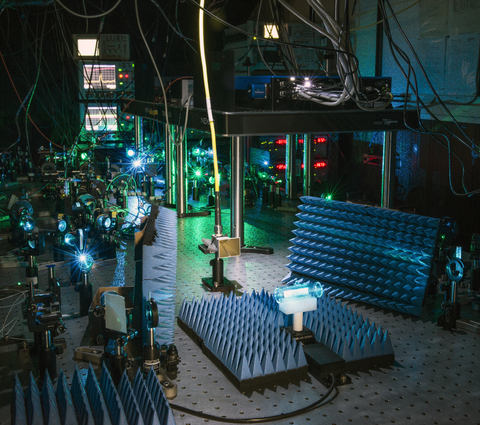Magnetic and Electric Fields

NIST is developing ultra-miniaturized, low-power magnetic and electric field sensors that produce dependable readings without ever needing to be calibrated by other devices. They provide measurements traceable to the International System of Units (SI), ensuring consistent results anytime and anywhere in the world.
These sensors use vapors of atoms such as cesium or rubidium confined in small cells. The atoms respond to electric and magnetic fields, and their response is measured with laser light. NIST scientists have pioneered and developed techniques to measure their responses with high accuracy.
Because the dimensions of the vapor enclosures are small, they can be made at comparatively low cost using the familiar tools and techniques of microelectronics and microelectromechanical systems (MEMS) fabrication, and thus readily commercialized.
Click on the boxes below to explore the technology in more detail.
Chip-Scale Atomic Magnetometers Electric Field MetrologyCellphone Magnetometers as Biosensors

